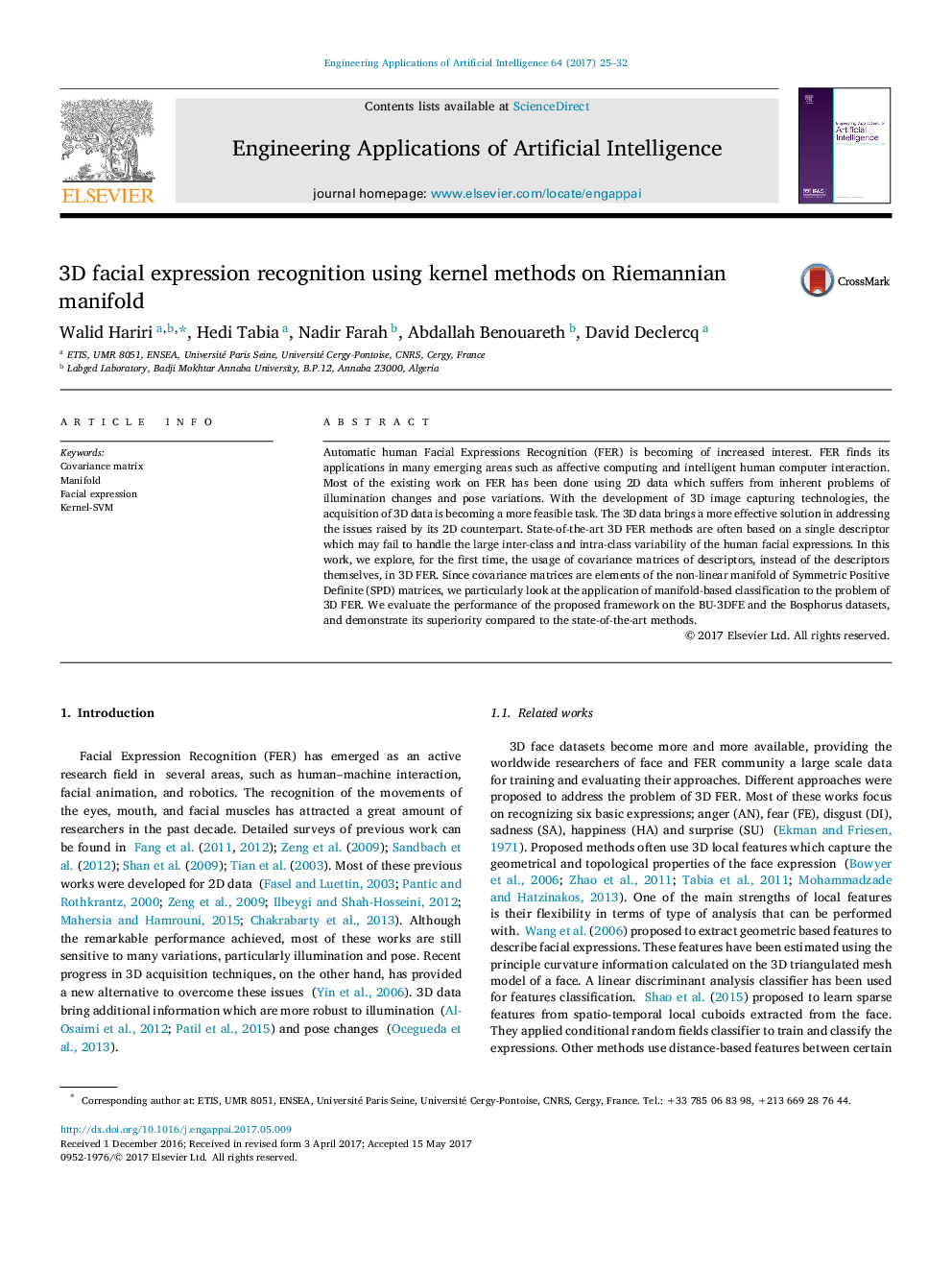| Article ID | Journal | Published Year | Pages | File Type |
|---|---|---|---|---|
| 4942642 | Engineering Applications of Artificial Intelligence | 2017 | 8 Pages |
Abstract
Automatic human Facial Expressions Recognition (FER) is becoming of increased interest. FER finds its applications in many emerging areas such as affective computing and intelligent human computer interaction. Most of the existing work on FER has been done using 2D data which suffers from inherent problems of illumination changes and pose variations. With the development of 3D image capturing technologies, the acquisition of 3D data is becoming a more feasible task. The 3D data brings a more effective solution in addressing the issues raised by its 2D counterpart. State-of-the-art 3D FER methods are often based on a single descriptor which may fail to handle the large inter-class and intra-class variability of the human facial expressions. In this work, we explore, for the first time, the usage of covariance matrices of descriptors, instead of the descriptors themselves, in 3D FER. Since covariance matrices are elements of the non-linear manifold of Symmetric Positive Definite (SPD) matrices, we particularly look at the application of manifold-based classification to the problem of 3D FER. We evaluate the performance of the proposed framework on the BU-3DFE and the Bosphorus datasets, and demonstrate its superiority compared to the state-of-the-art methods.
Related Topics
Physical Sciences and Engineering
Computer Science
Artificial Intelligence
Authors
Walid Hariri, Hedi Tabia, Nadir Farah, Abdallah Benouareth, David Declercq,
